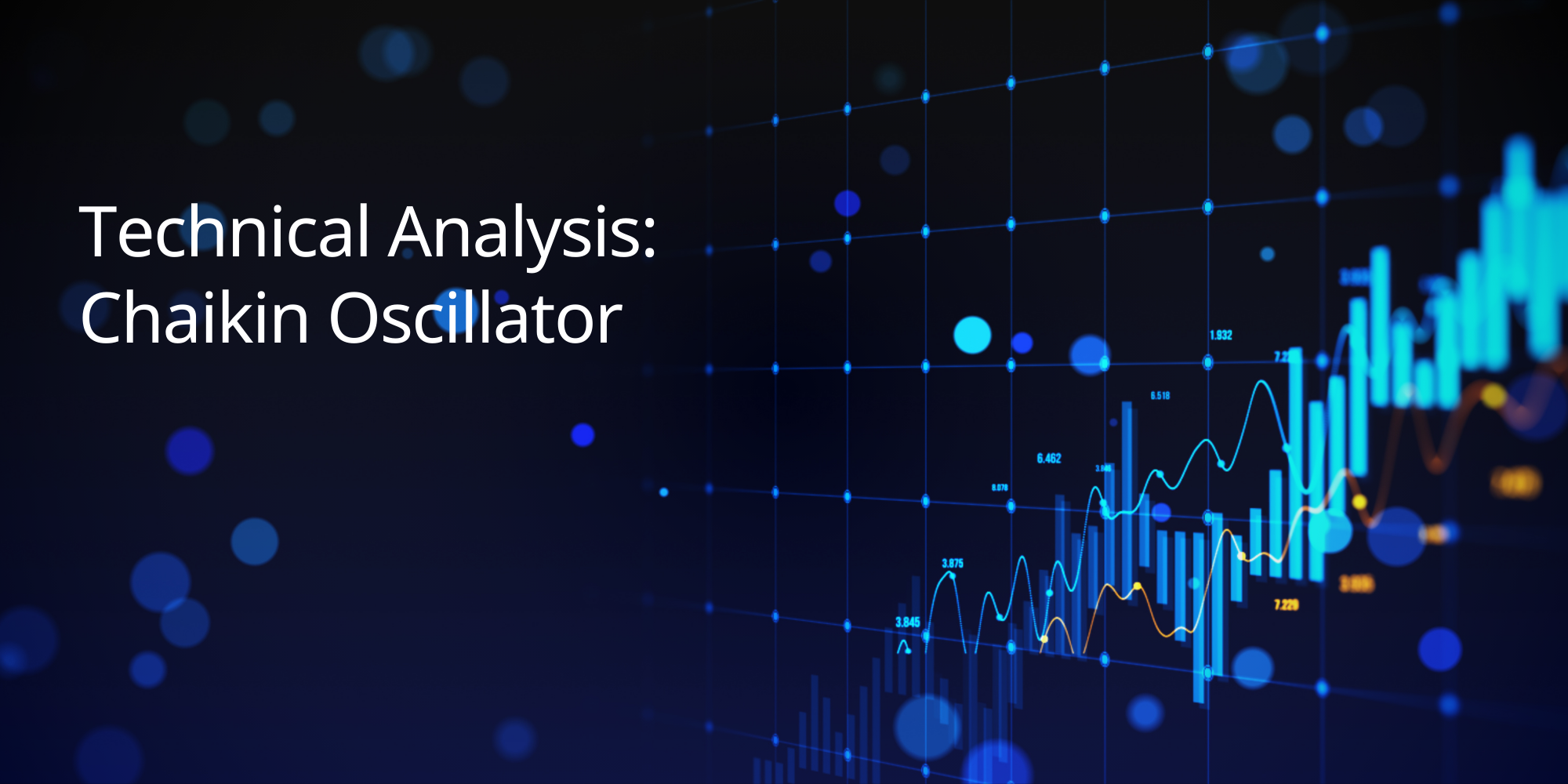Want to make more informed trading decisions backed by data? Statistical analysis offers a powerful approach to identifying market patterns, assessing risk, and uncovering potential trading opportunities. By applying statistical techniques to historical market data, traders can gain deeper insights into price movements and refine their strategies.
This comprehensive guide from TradeSmart explores the role of statistical analysis in trading. We’ll cover its definition, real-world applications, benefits, limitations, and key statistical methods used in financial markets. Get ready to elevate your trading with data-driven insights!
What is Statistical Analysis?
Statistical analysis is a cornerstone of quantitative trading, using historical data to identify patterns, assess risk, and make informed predictions about future market movements. It’s a data-driven approach that helps traders make objective decisions based on concrete evidence rather than relying solely on intuition or gut feeling.
In financial markets, statistical analysis can be applied to a wide range of data, including:
- Price data: Historical price movements of assets like stocks, forex pairs, and commodities.
- Volume data: The number of shares or contracts traded over a given period.
- Economic indicators: Data that reflects the overall health of the economy, such as GDP, inflation, and unemployment rates.
- Technical indicators: Derived values that provide insights into price trends, momentum, and volatility, such as moving averages, standard deviation, and correlation coefficients.
TradeSmart provides the tools and resources traders need to conduct statistical analysis. Our advanced trading platforms offer charting tools, technical indicators, and historical data to help you unlock the power of statistical analysis and improve your trading outcomes.
How Does Statistical Analysis Work in Trading?
Statistical analysis involves a systematic process of examining historical data and make informed predictions about future market movements. Here’s a breakdown of the key steps involved:
- Gather Data: Start by collecting relevant historical data. This might include price data, trading volume, economic indicators, or any other data that could influence market movements. Ensure the data is accurate, complete, and covers a sufficient period to identify meaningful patterns. The economic calendar of TradeSmart allows you to track down important economic events in the industry.
- Explore the Data: Analyze the data to identify relationships, trends, and anomalies. Use visual tools like charts and statistical methods like regression analysis to understand how different variables interact.
- Formulate Hypotheses: Based on your initial analysis, develop hypotheses about potential market movements or relationships between variables. For example, you might hypothesize that rising interest rates tend to correlate with a decline in stock prices.
- Test Your Hypotheses: Apply statistical tests to validate your hypotheses. This involves comparing your predictions to actual market outcomes to assess their accuracy and reliability.
- Develop a Model: If your hypotheses are supported by the data, develop a statistical model to formalize your findings and make predictions about future market behavior. This model might be a simple equation or a more complex algorithm.
- Validate Your Model: Continuously test and refine your model using new data. This ensures that your model remains accurate and relevant as market conditions change.
What is the Importance of Statistical Analysis?
The importance of statistical analysis to use historical data to make better trading decisions can be listed as follows:
- Uncovering Market Trends: By analyzing historical price data, traders can identify trends, patterns, and potential turning points. This allows you to anticipate market movements and make more informed trading decisions.
- Managing Risk Effectively: Statistical analysis helps you assess and manage risk by providing insights into the volatility and potential downside of different trading strategies and assets. This allows you to adjust your positions and risk exposure accordingly.
- Adapting Your Strategies: As market conditions change, statistical analysis can help you identify when it’s time to adjust your trading strategies. By recognizing shifts in trends or patterns, you can adapt your approach to better suit the current market environment.
- Making Data-Driven Decisions: Statistical analysis empowers you to make objective, data-driven decisions rather than relying on emotions or hunches. This can lead to more disciplined and consistent trading performance.
How Does Statistical Analysis Contribute to Stock Market Forecasting?
Statistical analysis provides a range of tools and techniques to help traders forecast stock market movements and make informed trading decisions. Here are some of the key methods used:
- Technical Indicators: Indicators like moving averages, standard deviation, and correlation coefficients can be used to analyze price and volume data, identify trends, and assess volatility. These indicators provide valuable insights into the historical behavior of a stock and can help predict potential future movements.
- Pattern Recognition: Statistical analysis can help identify recurring patterns in stock market data, such as trends, cyclical movements, and seasonal variations. Recognizing these patterns can provide clues about future price action and potential trading opportunities.
- ARIMA Modeling: ARIMA (AutoRegressive Integrated Moving Average) is a statistical model commonly used to forecast time series data, such as stock prices. It takes into account past values, trends, and seasonality to make predictions about future values.
- Machine Learning: Machine learning algorithms can analyze vast amounts of data and identify complex patterns that might be missed by traditional statistical methods. This can lead to more accurate forecasts and potentially uncover hidden trading opportunities.
By combining these methods, traders can gain a deeper understanding of stock market dynamics and make more informed predictions about future price movements.
What are the Statistical Methods Used in Analyzing Stock Market Data?
Traders use a variety of statistical methods and indicators to analyze stock market data and make informed trading decisions. Here are some of the most common tools:
- Moving Averages: Moving averages smooth out price fluctuations to reveal underlying trends. They can help identify the direction of a trend, potential support and resistance levels, and potential buy or sell signals.
- Standard Deviation: Standard deviation measures the volatility or dispersion of price data around its average. A high standard deviation indicates greater volatility, while a low standard deviation suggests a more stable price pattern. This information can help traders assess risk and adjust their trading strategies accordingly.
- Correlation: Correlation measures the relationship between two or more variables. In the stock market, correlation can be used to analyze the relationship between different assets, indicators, or economic factors. For example, a positive correlation between two stocks suggests that they tend to move in the same direction, while a negative correlation indicates that they tend to move in opposite directions.
Types of Statistical Analysis in Trading
While there are many types of statistical analysis, two of the most common in financial markets are:
- Descriptive Statistics: This type of analysis focuses on summarizing and describing historical data. It involves calculating key statistics like the mean (average), median (middle value), and mode (most frequent value) to gain insights into the central tendency and distribution of the data. Descriptive statistics can also be used to measure volatility, identify outliers, and understand the overall characteristics of the data.
- Inferential Statistics: This type of analysis goes beyond simply describing the data and aims to draw inferences or make predictions about a larger population based on a sample of data. In trading, inferential statistics can be used to test hypotheses about market behavior, forecast future price movements, and identify relationships between different variables. Common methods used in inferential statistics include regression analysis, hypothesis testing, and confidence intervals.
What are the Advantages of Statistical Analysis for the Stock Market?
Statistical analysis offers numerous advantages for traders seeking to make informed decisions in the stock market:
- Develop and Test Trading Strategies: By analyzing historical data, traders can develop and test various trading strategies to identify those that have performed well in the past. This can help you select strategies that align with your risk tolerance and investment goals.
- Predict Price Movements: While predicting the future is impossible, statistical analysis can help identify patterns and trends that may provide clues about future price movements. By analyzing historical data, you can gain insights into the potential direction and magnitude of future price changes.
- Interpret Economic Data: Statistical analysis can help you understand the relationship between economic indicators, such as GDP, unemployment, and inflation, and stock market performance. This allows you to interpret economic news and events more effectively and make informed trading decisions.
- Optimize Portfolio Allocation: By assessing the risk and potential return of different stocks through statistical analysis, you can optimize your portfolio allocation. This involves balancing your investments across different assets to achieve your desired risk-return profile.
What are the Disadvantages of Using Statistical Analysis in The Stock Market?
While statistical analysis is a valuable tool, it’s important to be aware of its potential drawbacks:
- No Guarantee of Future Results: Past performance is not always indicative of future results. Market dynamics can change rapidly, and patterns observed in historical data may not repeat in the future. Relying solely on statistical analysis without considering other factors can lead to inaccurate predictions and poor trading decisions.
- Vulnerability to Unexpected Events: Unexpected events, such as geopolitical crises, economic downturns, or natural disasters, can disrupt market trends and invalidate historical patterns. Statistical models may struggle to account for these unpredictable events, leading to inaccurate forecasts and potential losses.
- Risk of Data Misinterpretation: The accuracy of statistical analysis depends heavily on the quality and interpretation of the data used. If the data is incomplete, inaccurate, or misinterpreted, the results of the analysis can be misleading. It’s crucial to ensure the data is reliable and to interpret it carefully in the context of other market information.
- Limitations with Insufficient Data: Statistical analysis requires sufficient historical data to identify meaningful patterns and trends. For newly listed stocks or assets with limited historical data, statistical analysis may be less reliable. In these cases, it’s important to combine statistical insights with other forms of analysis, such as fundamental research and technical indicators.
Statistical Analysis for Risk Management and Portfolio Optimization
Smart investors understand the importance of managing risk and optimizing their portfolios. Statistical analysis plays a crucial role in achieving these goals:
- Data-Driven Insights: By analyzing historical and current market data, statistical analysis provides valuable insights into potential future price movements and volatility. This information empowers investors to make informed decisions about their portfolio allocation and risk management strategies.
- Objective Assessment: Statistical analysis helps remove emotional biases and promotes objective decision-making. Instead of relying solely on intuition or gut feeling, investors can use statistical evidence to assess risk and make rational choices about their investments.
- Risk Mitigation: By understanding the potential volatility and downside risk of different assets, investors can adjust their portfolios to align with their risk tolerance. For example, if statistical analysis suggests an increased likelihood of market volatility, investors can reduce their exposure to risky assets or diversify their holdings.
- Portfolio Optimization: Statistical analysis can help identify optimal portfolio allocations based on risk-return profiles and investment goals. By analyzing historical data and correlations between different assets, investors can create a diversified portfolio that balances risk and potential reward.
Frequently Asked Questions
Q: Can statistical analysis provide definitive conclusions about the market?
A: No. While statistical analysis uses historical data to identify patterns and trends, it cannot guarantee future outcomes. Market dynamics are constantly changing, and unexpected events can disrupt even the most reliable statistical models.
Q: Is the data used in statistical analysis always analyzed manually?
A: No. While manual analysis can be helpful, many traders use automated tools and machine learning algorithms to analyze large datasets and identify complex patterns more efficiently.
Q: Can non-quantitative data be included in statistical analysis?
A: Yes. While statistical analysis primarily focuses on quantitative data (numbers), it can also incorporate qualitative data, such as news sentiment or social media trends, to provide a more comprehensive view of the market.
Q: Can statistical analysis be applied to all financial instruments?
A: Yes, as long as there is sufficient historical data available for the instrument. Statistical analysis can be applied to stocks, bonds, forex pairs, commodities, indices, and cryptocurrencies.
Q: What are some common statistical methods used in stock market analysis?
A: Some of the most common methods include moving averages, correlation analysis, regression analysis, and ARIMA modeling. These methods help traders identify trends, assess risk, and make informed predictions about future market movements.
Start Trading




